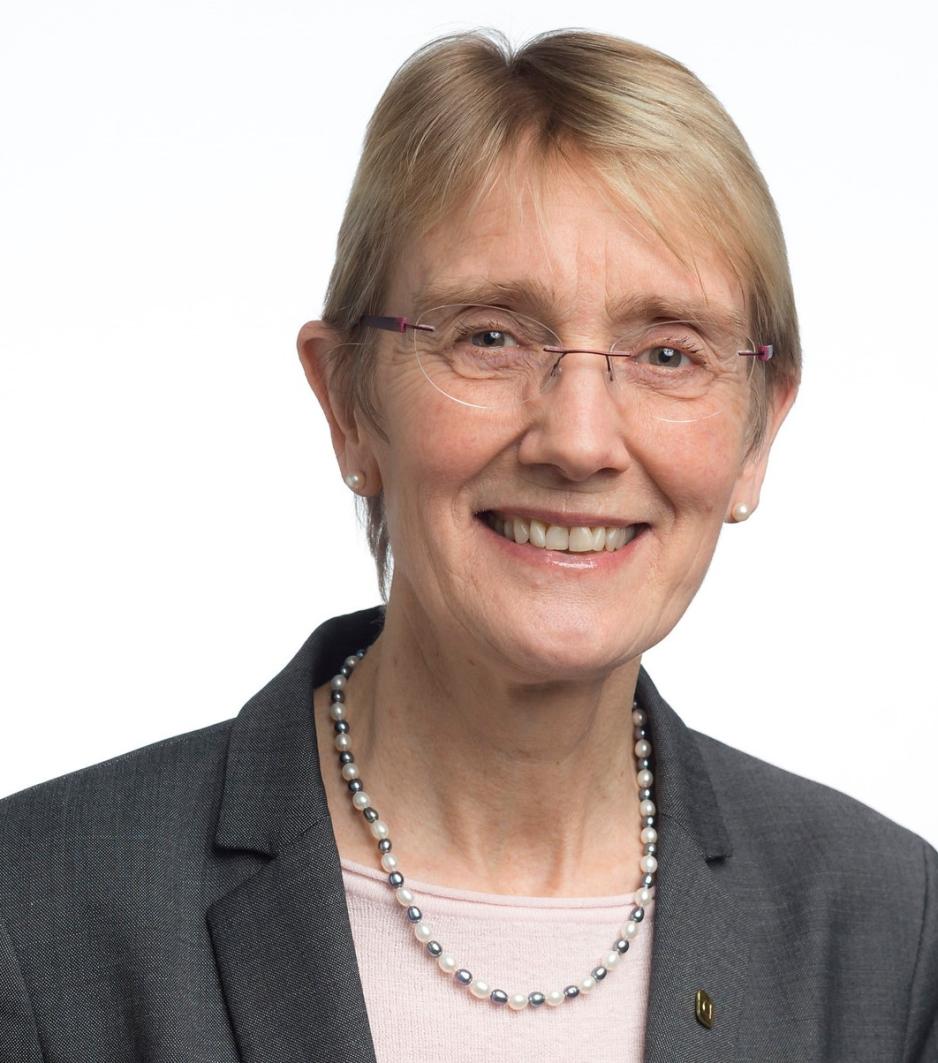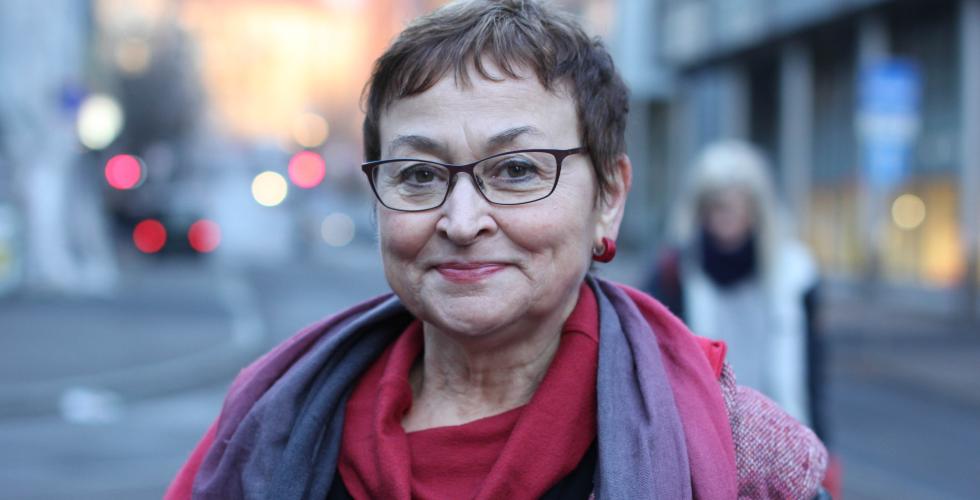Gender points can open new doors for men and women alike
“The use of gender points is not just about lifting people over a point threshold they would not otherwise reach. It is also about sending a signal that women and men are both wanted in the programme,” says Research Director Liza Reisel.
In the wake of the documentary “Kjønnskampen” [Battle of the Sexes] by Norwegian state broadcaster NRK, debate over gender discrimination has again flared up, with special focus on performance in school. Earlier this year, the National Commission on Gender Equality in Education showed that girls in primary and lower secondary school receive better marks than boys in all subjects except physical education. It also showed that fewer boys than girls complete upper secondary education, and that the boys who do receive lower marks, on average, than girls.
At the same time, women are eligible to receive additional points when seeking admission to a variety of higher education programmes, an advantage that men with few exceptions have not been able to enjoy. But what role do gender points really play in the pursuit of gender balance in educational and occupational choice?

Difficult to evaluate
“Almost all the measures to improve gender balance in higher education have been introduced in a way that makes them impossible to evaluate. There are many influences at work at the same time, so measuring the specific impact of gender points is difficult,” says Research Director Liza Reisel of the Institute for Social Research (ISF).
In April, the institute presented a report on gender-divided occupational and educational choices that examined gender balance measures in education. Reisel was project manager for the report, which forms part of the knowledge base for the Government’s gender equality policies for children and young people.
“What we know is that after gender points were introduced for women in certain engineering subjects at Norwegian University of Science and Technology (NTNU), the proportion of women in these subjects increased. But it has also increased in comparable subjects that have not had gender points, so it is hard to say exactly what is causing the impact,” she says.
“Important for NTNU”
The professors’ council at the Norwegian Institute of Technology (one of six institutions that merged in 1996 to create NTNU) approved the use of additional points for female applicants to the engineering and architecture study programmes from 1981 onwards. The various lines of study that are eligible to use gender points have changed several times since then.
NTNU’s Acting Rector, Anne Borg, believes the ability to use gender points for women has been important.
“Over time we have improved the proportion of women in the integrated five-year engineering programmes. But we still have a job to do for the bachelor’s level engineering studies,” Borg says.
Currently it is the Ministry of Education and Research that decides which study programmes can employ gender points, and the institutions must prove their eligibility by showing that other measures have not succeeded in boosting women’s representation. The Storting has asked the Government to draw up a report on a scheme for providing extra points to applicants to studies where one gender is overrepresented by, e.g., four to one.
Gender points for women compensated for men’s additional points
At NTNU, a number of study programmes – including nanotechnology, industrial economics and technology management, and energy and environmental engineering – lost the ability to use gender points for women from the 2016–2017 academic year onwards because the proportion of women in them had increased.
In the first admissions round after gender points were eliminated, the proportion of women accepted fell noticeably. In the industrial economics and technology management programme, the number of women entering declined from 53 per cent in 2015 to 19 per cent in 2016.
“Then we analysed the numbers to find out what happened and we saw that the grade point averages for male and female applicants were quite similar. But the men generally had more additional points than the women, and that tipped the scales. So the gender points had compensated for this difference,” Borg says.
One way such additional points are obtained is by completing military or civilian national service. New conscription rules have since come into force, making compulsory national service obligatory for women as well as men, though the precise effect of the new conscription rules is not yet clear.
Improving the study environment
In recent years, the proportion of women at NTNU has stabilized somewhat.
According to Borg, point totals are not the key determinant of female underrepresentation in bachelor’s level engineering programmes. More important is the fact that fewer women apply. Other measures are therefore called for.

“And now, after the last merger, we also have many study programmes that are very female-dominated, like nursing and primary and lower secondary teacher education for years 1–7. There we have been introducing measures to increase the number of men,” she says.
NTNU has long employed a variety of measures, beyond gender points, to attract more women to technology studies. It has arranged special days for girls and initiated Girl Project Ada, which is a major effort to recruit more women to technology and IT programmes and to create a supportive study environment for the women who are admitted.
“I am absolutely certain that better gender balance leads to a better learning environment,” Borg says.
“If your gender is greatly underrepresented and you can’t develop a good social network, then it can easily happen that if one person quits, others will do the same. Study environment was an important reason for starting the Ada project.”
Last year, the leaders of Chalmers University of Technology in Gothenburg visited to learn more about the NTNU initiatives.
“When I spoke to a Chalmers vice president this spring, I learned that they had a surge in applications from women after having their own girls’ days,” Borg says.
Now for men too
Over the years, with a few exceptions, the benefits of gender points were limited to women because the primary objective of previous gender equality legislation was to prevent gender discrimination against women. When the new Equality and Anti-Discrimination Act came in 2018, it paved the way for the use of gender points for men and women alike, and several institutions applied to the Ministry of Education and Research to introduce the practice.
During this year’s admissions process, men could receive gender points in connection with two nursing programmes, the child welfare programme at OsloMet, the clinical psychology programmes at the universities of Oslo and Bergen and veterinary and animal care programmes at the Norwegian University of Life Sciences (NMBU), where a gender-points scheme to benefit men has been practiced for many years.
The Dean of the NMBU Faculty of Veterinary Medicine, Anne Storset, is very satisfied with the use of gender points for men at her institution.
“For us, gender points are the reason there are enough men in the programme to have a good study environment. If there are too few men, those who do enter the programme will be more likely to leave it,” she says.
Noticeable effect
In 2004 NMBU began granting two additional points to members of the underrepresented gender in veterinary and animal care studies, using NTNU’s system of female gender points as a model after first applying to the Ministry of Education and Research for approval.
But in 2017, the regulations were reinterpreted and the ministry concluded that NMBU had no basis for using gender points for men. Under the law, special treatment benefitting men was permitted only for study programmes that focused on care of children. Gender points for men were therefore eliminated in the 2017–2018 admissions process.

In 2018, after approval under the new Equality and Anti-Discrimination Act, the points were reintroduced. During the year without gender points, the number of male first-year students in the veterinary programme dropped from about 10 in previous years (out of a total of roughly 70) to 5. After reintroduction of the points, the number rose back to 11.
“We had an internal discussion when additional points for men were eliminated. The additional points are a disadvantage for the women who don’t get into the programme because a man takes their place, but we still think gender points are worthwhile in order to create a good study environment and help to improve the gender balance among veterinarians in Norway. Even the women in the veterinary programme expressed support for the measure – but of course those are the women who got in,” Storset says.
“The men’s proportion is low both because women have higher marks and because the programmes attract mostly women. But now a systematic difference has been shown in marks for girls and boys in upper secondary school. That disparity is something we think gender points can help to correct.”
According to Storset it is not the case that gender points open the programmes up to unqualified men:
“The grade point average among our applicants is very high, and it is untrue that the boys are poorer students. The problem is the many well-qualified applicants who don’t get in.”
NMBU also employs gender points for men in its animal care programme, which is a three-year bachelor’s programme. There, however, the points appear to have no effect.
“The applicants are largely women, so gender points do not help,” says Storset. “Instead we will have to focus on other measures, like better communication.”
Gender points need evaluation
“Gender points will have the greatest effect on programmes where the number of applicants is high. If there are no applicants, additional points are no help,” confirms Liza Reisel of the Institute for Social Research.
“I believe that the use of gender points is not just about lifting people over a point threshold they would not otherwise reach. It is also about sending a signal about being wanted in the study programme. And that there is a good study environment to be part of.”
To improve gender balance in higher education in future we will have to learn more about which measures work and which ones don’t, she says.
“For example, it will be interesting to see what happens in the psychology programmes in Oslo and Bergen, which have been granted permission to use gender points for men for a four-year period,” she says.
Is it possible to evaluate the effect of gender points?
“It can be done – for example, by phasing in gender points at different times in different institutions so you can compare the situation before and after introduction across all institutions through the entire period,” Reisel says.
White paper on the way
The National Commission on Gender Equality in Education proposed, among other things, that trials using additional points in higher education should only take place with the approval of Universities Norway and should encompass all institutions offering a particular line of study. Only then would the measure be large enough to undergo evaluation. The commission will also insert evaluation requirements into the regulations governing higher education admissions.
Reisel herself sits on the Government’s #UngIDag [Young Today] Commission, which will examine gender equality challenges for children and young people and then propose measures to address them. The panel will submit its report this autumn. Also this autumn, the Government is expected to submit a white paper to the Storting on early childhood initiatives and inclusiveness in day-care centres and schools which will include implementation measures related to the proposals of the National Commission on Gender Equality in Education.
“So things will be happening in the coming year, but it will be interesting to see if we get a major push or just tinkering here and there. History tells us that large-scale measures are hard to implement,” Reisel says.
Translated by Walter Gibbs and Carol Eckmann.
Applicants to higher education can receive gender points for admission to certain study programmes where the gender balance is highly skewed. The goal is to improve gender equality within the programme and in working life generally.
Relevant institutions apply to the Ministry of Education and Research, which determines which study programmes are permitted to employ gender points.
Until 2018 gender points were for women only, with the exception of NMBU’s veterinary and animal care programmes.
When the Equality and Anti-Discrimination Act took effect in 2018 it became possible to apply to use gender points for both sexes. Since then institutions have been able to employ gender points for a limited period only, and they must show that other measures to improve gender balance have not worked.
In 2019, men can receive gender points for the:
- veterinary and animal care programmes at NMBU;
- nursing care programme at Lovisenberg Diaconal University College and the University of Agder;
- child welfare programme at OsloMet;
- clinical psychology programmes at the universities of Oslo and Bergen.
In 2019, women can receive gender points for the:
- bachelor’s level study programmes in engineering;
- agricultural study programmes at Inland Norway University of Applied Sciences;
- bachelor’s level programmes in maritime subjects (certain programmes);
- five-year integrated master’s level programmes in technology and engineering at NTNU (certain programmes).
Source: Samordna opptak


